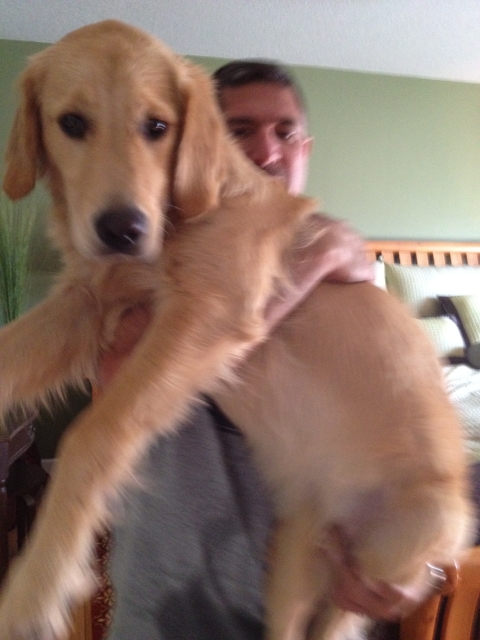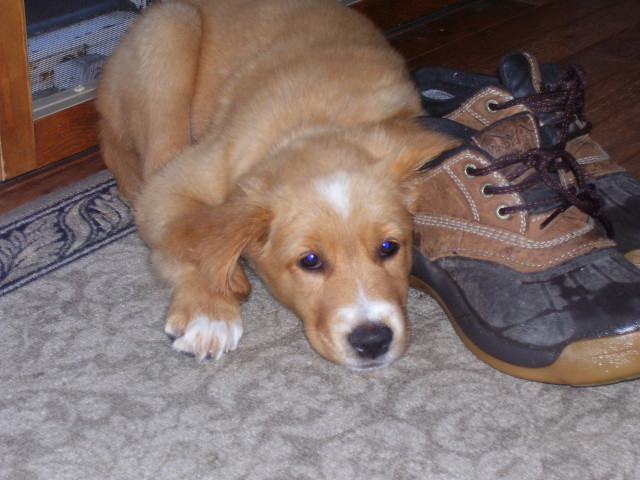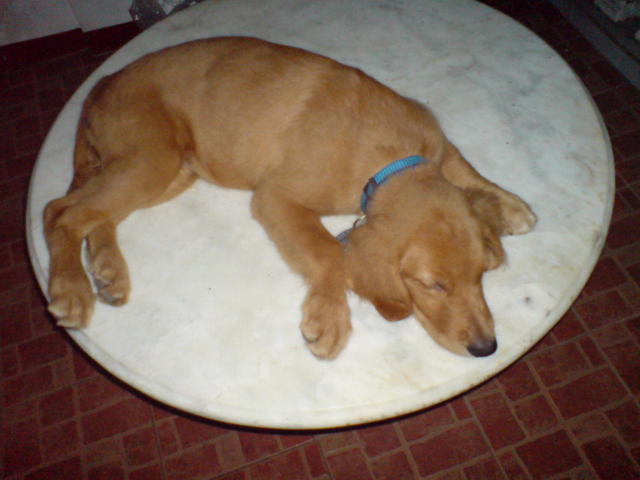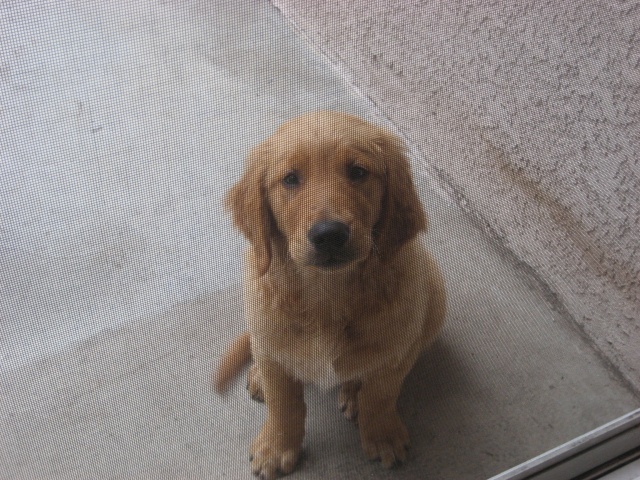QuestionHi Labman,
Two months ago, my girlfriend recently adopted an 8-year-old golden retriever (male, neutered). He has exhibited some very annoying behavioral problems since day 1, the worst of which being his excessive attempts to hump both of us. This usually occurs whenever her and I hug or get close in any way. We've tried different ways of dealing with it, but he doesn't seem to learn at all.
Another annoying trait is his excessive licking -- he will lick people non-stop, and even worse, he has excessive saliva to boot. Other issues involve chewing/eating shoes and just a general rowdiness about him....he seems very energetic for a dog his age.
The previous owner neglected him and kept him outdoors almost exclusively. My girlfriend keeps him indoors almost exclusively. I'm wondering if this has anything to do with it.
She says one can train an old dog to do new tricks.....I'm thinking otherwise. Am I wrong? I'm hoping this won't have to come down to a "it's me or the dog" scenario. Any help or advice you could provide would be greatly appreciated! Thanks!!!
-Rob
rjhhh@excite.com
AnswerNeuter him if not already, obedience train him and crate him when you can't watch him.
The key to most behavior problems is approaching things using the dog's natural instincts. Dogs see all the people and dogs in the household as a pack with each having their own rank in the pack and a top dog. Life is much easier if the 2 legged pack members outrank the 4 legged ones. You can learn to play the role of top dog by reading some books or going to a good obedience class. A good obedience class or book is about you being top dog, not about rewarding standard commands with a treat. Start at http://www.dogsbestfriend.com/ For more on being top dog, see http://www.dogbreedinfo.com./topdogrules.htm
It is only natural that a puppy resists its crate at first. What the puppy
wants more than anything else is to be others, you, anyone else in the
household, and any other pets. In our modern society, even if we are home,
other things distract us from the attention an uncrated puppy must have. The
only real solution is to crate the dog when you aren't around. The dog may be
happier in its den than loose in the house. It relaxes, it feels safe in its
den. It rests, the body slows down reducing the need for water and relieving
its self. Dogs that have been crated all along do very well. Many of them
will rest in their crates even when the door is open. I think the plastic
ones give the dog more of a safe, enclosed den feeling. Metal ones can be put
in a corner or covered with something the dog can't pull in and chew. Select
a crate just big enough for the full grown dog to stretch out in.
Leave it some toys. Perhaps a Kong filled with peanut butter. Don't leave
anything in the crate the dog might chew up. It will do fine without even any
bedding. You will come home to a safe dog and a house you can enjoy.
A dog that has not been crated since it was little, may take some work.
Start out just putting its toys and treats in the crate. Praise it for going
in. Feed it in the crate. This is also an easy way to maintain order at
feeding time for more than one dog.
The "shut the puppy in a safe room" is a fallacy. Very few houses even have a
safe room. How many of us have a room with a hard surfaced floor and nothing
else? Most rooms have electrical cords to chew if nothing else. In addition
to destroying anything a bored puppy finds to chew, it may choke or have
intestinal blockage from the pieces. I had a friend that left her dog in a
"safe" room. It ate a hole in the floor covering. The safe rooms fail to
give the dog the comfort of the enclosed space their instinct requires. Nor
do they restrict activity extending the time the dog can go without relieving
itself.

 My 7 month golden retriever
Question
Mako
Hi,
My 7 month golden retriever pu
My 7 month golden retriever
Question
Mako
Hi,
My 7 month golden retriever pu
 Pure golden with lots of white
Question
Abby 9 weeks
I bought a purebred golden
Pure golden with lots of white
Question
Abby 9 weeks
I bought a purebred golden
 Anxiety? golden retreiver ; valerian time release canine dosage :
QuestionMy Golden is panting, pacing and pawing excessi
Anxiety? golden retreiver ; valerian time release canine dosage :
QuestionMy Golden is panting, pacing and pawing excessi
 dog licking legs
QuestionI have a blue tice walker that has licked holes
dog licking legs
QuestionI have a blue tice walker that has licked holes
 Walking
Question
My 1 year old golden retriever is very hyper-
Walking
Question
My 1 year old golden retriever is very hyper-